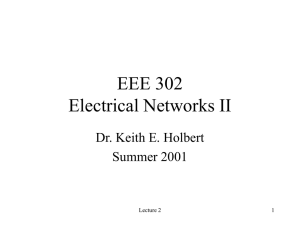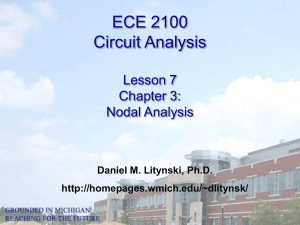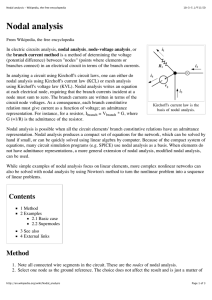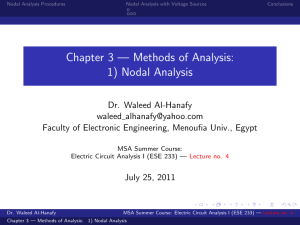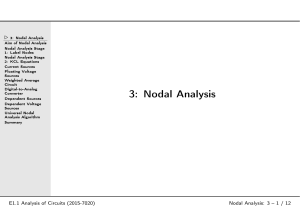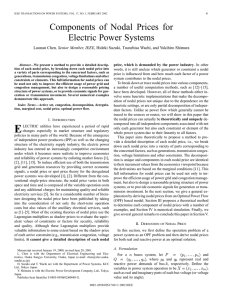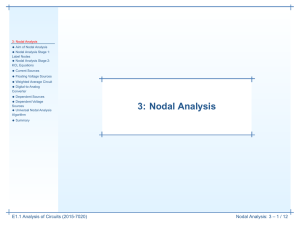NODAL ANALYSIS (Kirchoff`s voltage and current laws) One needs
advertisement
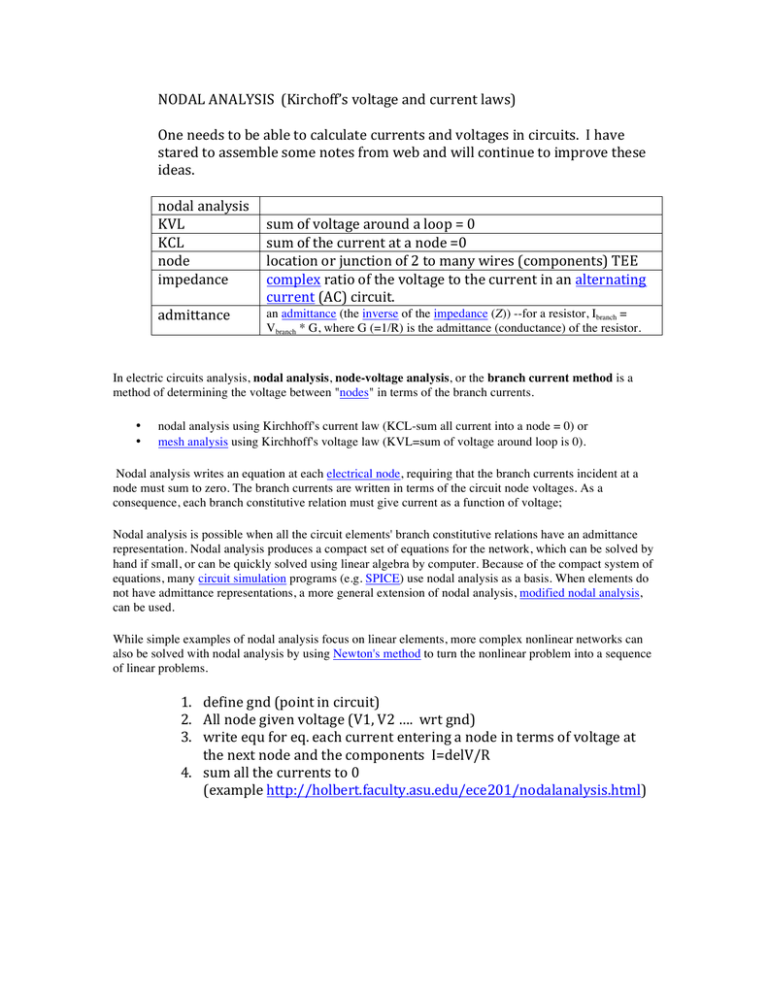
NODAL ANALYSIS (Kirchoff’s voltage and current laws) One needs to be able to calculate currents and voltages in circuits. I have stared to assemble some notes from web and will continue to improve these ideas. nodal analysis KVL sum of voltage around a loop = 0 KCL sum of the current at a node =0 node location or junction of 2 to many wires (components) TEE impedance complex ratio of the voltage to the current in an alternating current (AC) circuit. an admittance (the inverse of the impedance (Z)) --for a resistor, Ibranch = admittance Vbranch * G, where G (=1/R) is the admittance (conductance) of the resistor. In electric circuits analysis, nodal analysis, node-voltage analysis, or the branch current method is a method of determining the voltage between "nodes" in terms of the branch currents. • • nodal analysis using Kirchhoff's current law (KCL-sum all current into a node = 0) or mesh analysis using Kirchhoff's voltage law (KVL=sum of voltage around loop is 0). Nodal analysis writes an equation at each electrical node, requiring that the branch currents incident at a node must sum to zero. The branch currents are written in terms of the circuit node voltages. As a consequence, each branch constitutive relation must give current as a function of voltage; Nodal analysis is possible when all the circuit elements' branch constitutive relations have an admittance representation. Nodal analysis produces a compact set of equations for the network, which can be solved by hand if small, or can be quickly solved using linear algebra by computer. Because of the compact system of equations, many circuit simulation programs (e.g. SPICE) use nodal analysis as a basis. When elements do not have admittance representations, a more general extension of nodal analysis, modified nodal analysis, can be used. While simple examples of nodal analysis focus on linear elements, more complex nonlinear networks can also be solved with nodal analysis by using Newton's method to turn the nonlinear problem into a sequence of linear problems. 1. define gnd (point in circuit) 2. All node given voltage (V1, V2 …. wrt gnd) 3. write equ for eq. each current entering a node in terms of voltage at the next node and the components I=delV/R 4. sum all the currents to 0 (example http://holbert.faculty.asu.edu/ece201/nodalanalysis.html)



